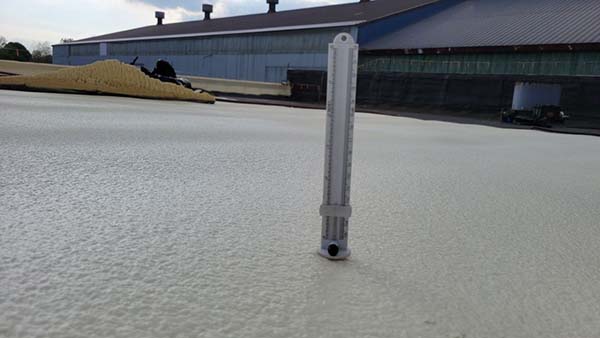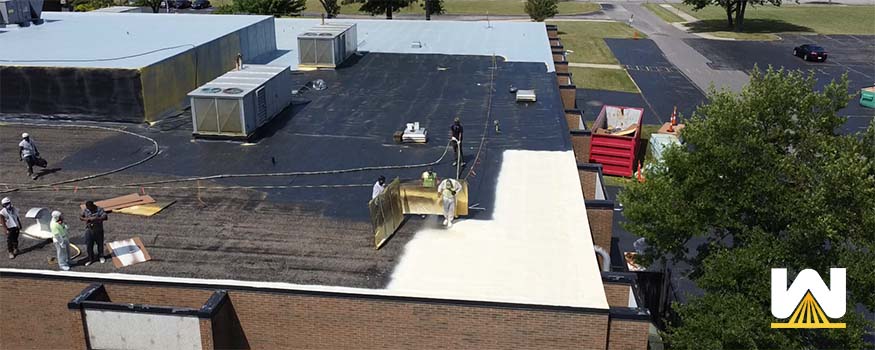So, you have some questions about a spray foam roof installation. One question you have is:
“How are they able to accurately level a sprayed foam over the existing roof for consistent depth of foam?”
Here’s a response from one of our owners:
“Our spray foam applicators are trained and have a minimum of 5 years of experience. Also note that throughout the process, each applicator utilizes a “depth gauge” to continually monitor the spray foam thickness. The application thickness will be adjusted where needed to achieve a “slope to drain” condition as well to achieve the proper slope throughout.”
Here’s a photo of a depth gauge:

In this article, we’ll cover the 4 reasons why the thickness of spray foam matters.
And so you’re aware, West Roofing Systems has been installing spray foam roofing systems since 1979. Every installation is installed to provide the proper thickness of spray foam.
Every article written is reviewed and edited before publishing by a spray foam roofing expert with more than 30 years in the field.
Let’s get started!
Why does the thickness of spray foam matter?
You might think, “can’t a spray foam company install a very thin amount of spray foam and call it a day?”
Any spray foam company that understands the product knows that’s false.
There are many reasons why the proper thickness of spray foam matters.
Reason #1 – needs to be at least 1” thick
For spray foam to mix, adhere, and cure correctly, at least 1” of spray foam must be installed. If you run into a spray foam company that wants to install anything less than 1” thick, they don’t understand the science of spray foam.
Reason #2 – need the right R-value
If it’s a new construction project, there are minimum R-values that need hit to be code compliant. For Ohio, it’s an R-25. With spray foam having an R-value of 6.5 per inch of thickness, roughly 4 inches of spray foam will need to be installed.
If it’s not a new construction project, you need to determine how many roofing systems are already installed. If there’s only one system installed, and you’re planning on foaming over this, then you can install any thickness of spray foam you would like.
Maybe you have an R-value target that you’re trying to achieve? In this case, apply the proper thickness of spray foam to achieve the desired R-value.
Reason #3 – needed to get manufacturer warranty
Every spray foam manufacturer has different specs to hit to obtain a warranty. For example, if the client would like an R-25 with a 15-year warranty, then roughly 3-4 inches of spray foam would be installed (this depends on the current roof and what R-value it has before the installation), and the thickness of the protective coating that needs to be installed.
For example:
- A 10-year warranty needs coating to be installed at least 20 mils thick
- A 15-year warranty needs coating to be installed at least 25 mils thick
- A 20-year warranty needs coating to be installed at least 30 mils thick
Reason #4 – proper sloping
The thickness of spray foam and coating matters because it’s the only way to provide the proper sloping. If the roof isn’t sloped properly, ponding or standing water can be left on the roof.
Industry standards require that no area of water should exceed 100 square feet at ½” deep after 24 hours of dry conditions.
Experienced installers, combined with a depth gauge will result in a properly sloped roof.
To get a manufacturer’s warranty, a representative from the manufacturer will come out to the roof and measure thickness levels.
If the foam or coating isn’t thick enough, the installer will have to add more foam/coating to meet the warranty requirements.
Conclusion
Hopefully, you learned that the proper thickness of spray foam is important. If it’s not thick enough, the product will not perform how it’s supposed to. If it’s not strategically installed, there could be improper sloping which can lead to ponding/standing water.
And if it’s not thick enough, your roof might not qualify for a manufacturer’s warranty.
Here are some other articles related to spray foam roofing that may interest you:


